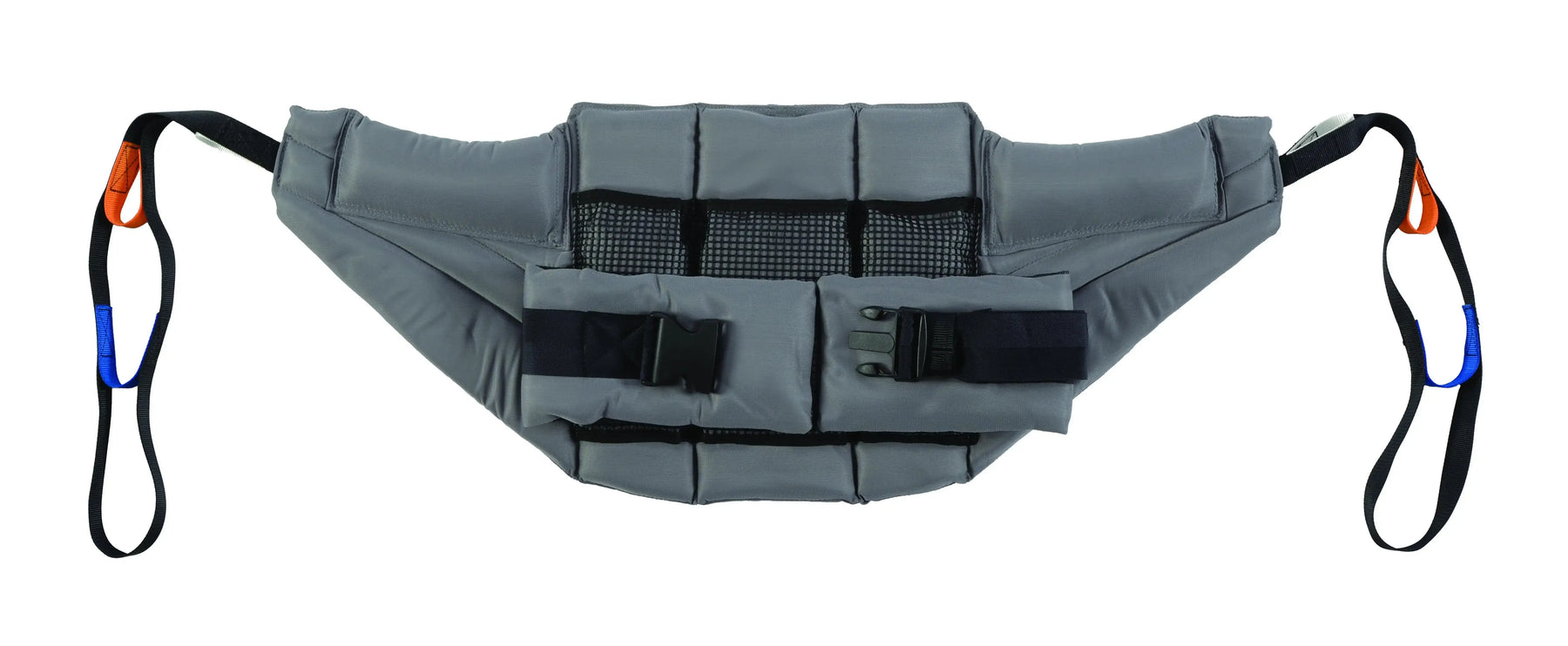Choosing the Right Hoyer Lift Sling for Safe and Comfortable Transfers

For individuals with mobility limitations, a Hoyer lift sling plays a critical role in enabling safe and dignified patient transfer. At Reliable Ramps, we provide reliable lift sling solutions that help both caregiver and patient during complex hoisting situations like toileting, bathing, or moving between a wheelchair and bed. Whether used in homecare or clinical environments, slings are designed to offer comfort, support, and security.
Selecting the right sling is essential to meet the individual needs of the patient or resident. Factors such as body size, weight, health conditions, and transfer purpose all impact which sling types are most appropriate. With slings available in various designs, fabrics, and sizes, it’s important to know what options best match your lift system and care routine.
What Is a Hoyer Lift Sling?
A patient lift sling is a supportive fabric accessory used with a patient lift, such as a Hoyer lift or electric patient lift, to aid in safely lifting and transferring individuals. The sling makes it possible to cradle the patient in bed, in a seated position, or even in a supine position, depending on the model.
These slings are attached to the lift system via straps or loops that connect to a spreader bar. They support the user’s head, neck, back, and lower body, depending on the sling design, ensuring a safe lift from a chair or wheelchair, commode, or bed.
Types of Hoyer Lift Slings
Understanding the different types of Hoyer slings is key to choosing the right one. Each is designed for specific patient transfer tasks, comfort levels, and user mobility.
Universal Slings
Universal slings are the most common and slings are ideal for general transfers. They offer full body support, including head support, and are available with or without head support options. These slings come in different sizes and are typically used when the patient is in a sitting or reclined position.
Commode Slings
Toileting slings, also known as commode slings, feature a commode opening to allow the patient to use the toilet without removing the sling. These slings offer targeted support to the lower back and two under-thigh areas, providing access for hygiene and toileting while maintaining safety.
Hammock and Divided Leg Slings
These are often used for complex transfers or bathing slings. The divided leg sling style allows for easier positioning of the patient in a seated or supine layout. Hammock designs provide more full-body support, including for those in a reclined state.
Sit-to-Stand and Stand Assist Slings
Used with a recline sit to stand lift, these stand assist slings are for patients who can bear some weight. The stand assist sling wraps around the upper back and torso, offering support for standing or pivoting tasks. These are commonly used in rehab or homecare environments.
Positioning and Repositioning Slings
A repositioning sling helps to turn or reposition the patient in bed without requiring physical lifting. These are vital for patients and caregivers when frequent adjustments are needed to prevent bedsores or to aid circulation.
Sling Materials: Comfort and Function
Slings are made from different materials depending on use. At Reliable Ramps, we carry slings made from breathable mesh, durable polyester, and smooth nylon. Each material is selected for comfort, durability, and cleanability.
- Mesh slings: Perfect for bathing or warm climates. These allow for drainage and quick drying.
- Polyester material: Easy to clean, sturdy, and suitable for everyday use.
- Nylon: Offers a sleek surface that reduces skin friction.
Some slings feature extra padding or buttock strap support for added comfort. Disposable slings are also available for infection control or high-turnover care settings.
Choosing the Right Sling Size and Capacity
Size and weight capacity are crucial in safe lifting. Using a sling that’s too small can cause pinching or slipping; too large, and the user won’t have proper support.
- Bariatric slings are designed to handle heavier patients and offer extra surface area for safety.
- Full body slings provide support from head to thighs, while partial or without head support versions are used for active individuals.
- Sizing varies by brand but is generally based on patient weight and height. Always check with the sling manufacturer for proper fitting guidance prior to use.
Proper Use and Compatibility
Before every transfer:
- Make sure that the sling is compatible with your Hoyer lift or electric patient lift.
- Inspect for wear, tears, or weak stitching.
- Confirm proper strap alignment and adjustment.
- Support the neck and lower back if necessary, especially for users needing a highback design.
- Always keep the patient in a seated or stable position during transfers.
Reliable Ramps recommends caregivers follow proper safe patient handling practices to reduce strain and risk of injury. The right sling will allow for a safe and smooth transfer without assistance or compromise to dignity.
Features That Improve Patient Comfort
Today’s Hoyer lift slings are designed for a variety of tasks and environments. Some slings are available with:
- Removable head support
- Quick-drying mesh for bathe or shower use
- Reinforced loops and straps
- Tags for identifying sling types and weight capacity
- Color-coded loops for adjusting sitting position
Reusable slings are great for long-term care, while multiple patients may require individual or disposable sling options for hygiene and safety.
Why Choose Reliable Ramps?
When it comes to mobility equipment, Reliable Ramps is dedicated to offering only dependable, tested, and user-focused products. Our Hoyer lift slings come in a variety of materials, sizes, and designs—all selected to meet your exact transfer needs. Whether you’re purchasing for home use or a care facility, our knowledgeable team is ready to help match you with the best sling for your setup.
